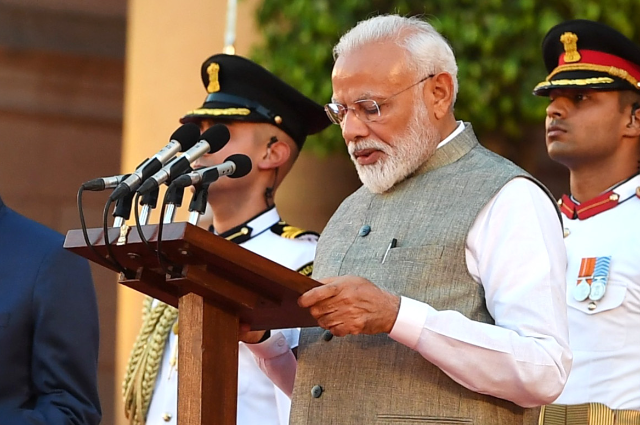Introduction
An essential component of every thriving democracy is pressing freedom. Informing the public, keeping governments responsible, and giving different voices and viewpoints a forum is all made possible by free and independent media. Nonetheless, there has been a lot of discussion and examination surrounding the idea of press freedom in India in recent years. This essay explores the pinnacle of press freedom as well as the impact of the so-called "Modi Media."
Indian Press Freedom
Press freedom is protected by Article 19(1)(a) of the Indian Constitution, which also ensures freedom of speech and expression. Since many years ago, India's strong democratic heritage has given rise to a thriving and varied media environment that has greatly shaped public opinion and discourse. However, there are many different aspects of press freedom, and multiple factors are involved. This encompasses not only the legislative framework but also economic interests, sociopolitical dynamics, and technology advancements.
Ownership of the Media and Financial Interests
Media ownership is a crucial component of press freedom. In India, a small number of powerful corporations and business entities control the majority of the country's media. Concerns concerning the media's objectivity and independence are frequently raised by this ownership concentration. It may result in media outlets engaging in self-censorship, avoiding stories that could put their corporate relationships or financial interests in jeopardy. This is a global media industry problem, not just one that affects India.
The Government's Function
Another important facet of press freedom is the government's role in media regulation. The government can indirectly pressure media outlets through its control over broadcasting licenses, advertising revenues, and regulatory bodies, even though it should ideally act as a facilitator rather than a regulator. Concerns regarding the Modi government's approach to media regulation and its potential effects on press freedom have drawn attention to it.
Modi Media: The Concept and Its Significance
The term "Modi Media" is frequently used disparagingly to refer to media organizations or journalists who are thought to be in support of India's ruling Bharatiya Janata Party (BJP) and Prime Minister Narendra Modi. It's crucial to remember that journalists and media organizations can have a variety of viewpoints and may not all fall under one particular category. The term "Modi Media" is not an official designation; rather, it is a subjective description. Here are some instances of journalists and media organizations that have been linked to this designation:
- Republic TV: This news channel, run by Arnab Goswami, has come under fire for its aggressive support of the policies and actions of the Modi government and for taking a steadfastly pro-government stance.
- Zee News: A division of Zee Media Corporation, Zee News has been accused of supporting the narrative of the ruling Bharatiya Janata Party and having a pro-government slant.
- Times Now: The Times Group-owned news channel has come under fire for what is seen as a shift in editorial stance in favor of the government, especially during important events and elections.
- Sudhir Chaudhary: Sudhir Chaudhary, the chief editor of Zee News, has come under fire for his reporting and analysis and has been linked to pro-government journalism.
- OpIndia: This is an online news and opinion platform that is well-known for its right-wing and pro-government stances, which are frequently linked to the narrative of the Modi administration.
- My Nation: My Nation, another digital news outlet, is occasionally regarded as a component of the media environment that supports Modi's leadership and is therefore pro-government.
The Benefits of Modi Media
Government supporters contend that media outlets' alignment with the government's policies and development agenda is the cause of the Modi Media phenomenon. They argue that the policies of the government have led to significant investment, economic expansion, and the development of infrastructure. Modi Media supporters assert that the government's accomplishments and its capacity for clear communication of its goals are what led to this alignment.
Media Criticism of Modi
Modi Media's detractors claim that it is representative of a larger trend in which media organizations are charged with being soft on the government and lacking in critical journalism because of their financial interests or direct political affiliation. They cite incidents in which journalists have been intimidated, critical reporting has been repressed, and a culture of self-censorship has developed.
Obstacles to Press Independence
Press freedom in India faces more than just media ownership and relations between the government and the media. Several of these difficulties consist of:
- Legal Pressure: Defamation lawsuits and other legal actions against journalists and media organizations can be a hindrance to critical and investigative journalism.
- Online harassment: Threats and harassment directed at journalists, especially women, can discourage them from reporting without fear.
- Self-Censorship: Self-censorship is frequently caused by a fear of retaliation, whether it comes from the government, political parties, or influential interest groups.
- Absence of Pluralism: A vibrant democracy depends on a varied and pluralistic media environment. But there are worries that the voices and viewpoints in the media are becoming more limited.
- Violence Against Journalists: Press freedom has been weakened by incidents of violence against journalists in India, including physical assaults and even murder.
- Internet Shutdowns: During periods of unrest or protest, the government may utilize internet shutdowns to block the flow of information and obstruct journalistic endeavors.
The apex of press liberty and the impact of Modi in India, media issues are intricate and have a broad impact on public debate, democracy, and the media's place in society. Despite the fact that both sides have valid points, it is imperative to continue to be watchful and critical of how the media landscape is changing. Press freedom must be safeguarded and advanced if the media is to continue as a strong, independent force that can represent a range of viewpoints, hold the power.

